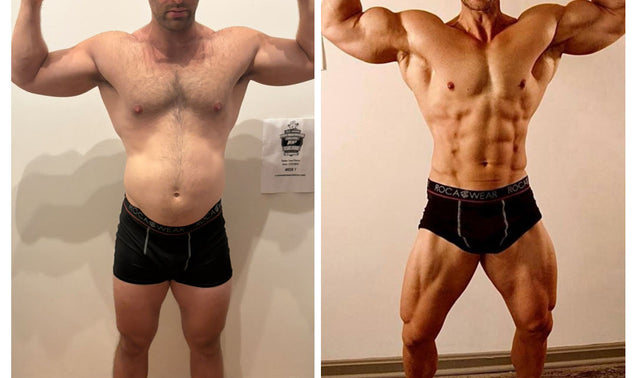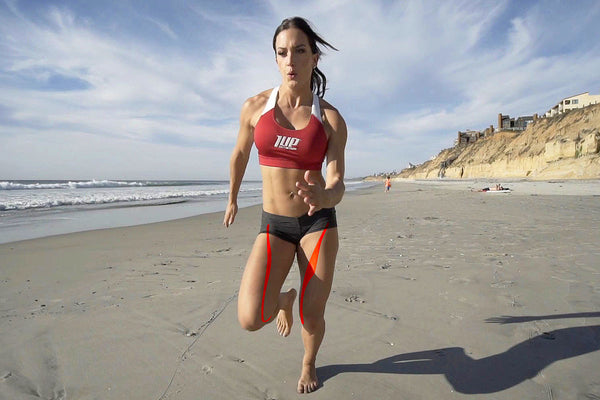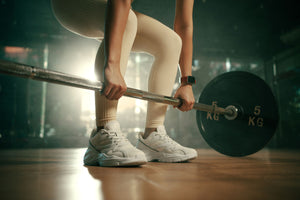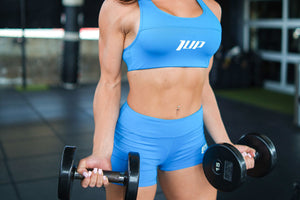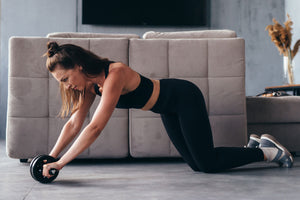The muscles of the lower body are a vast, integrated (and complicated) matrix of muscles. While muscles in the glutes, hamstrings, and quads tend to get all the attention, there’s one muscle that plays a vital supporting role in your ability to perform at your best in the gym.
That muscle is the sartorius and in this article we’ll discuss what it does, what roles it serves, and how to strengthen it.
Let’s get started!
What is the Sartorius Muscle?
The sartorius muscle is a superficial muscle.
It originates on the anterior superior iliac spine (asis), which is commonly referred to as the hip point, and sweeps down at an angle across the front of the thigh and inserts into the pes anserine.[1]
The pes anserine is an area just below the inside of the knee.
Due to the point of insertion below the joint line, many fitness enthusiasts believe dysfunction in the muscle is the cause of inner knee pain, and while it may be a contributing factor to knee pain, it’s not a 100% guarantee.
That is why if you are experiencing knee pain (or any kind of pain for that matter) you need to see a qualified professional (physical therapist, orthopedist, etc.).
Where Does the Sartorius Name Come From?
Sartorius is derived from the Latin word sartor, which means “tailor.”[2]
Unsurprisingly, you may hear the sartorius occasionally referred to as “tailor’s muscle”. This is in reference to the cross-legged position tailors sat in once upon a time as they toiled.[1]
What Does the Sartorius Muscle Do?
The sartorius muscle is involved in movement of both the hip and knee joint. However, just because it is located on the front of the thigh doesn’t mean it serves as an extensor of the thigh.
Actually, the sartorius helps flex, abduct and external (outward) rotate the hip joint.
At the knee joint, the sartorius aids in flexion and when the knee is flexed, it assists in medial rotation of the leg.
Basically in the knee joint, the sartorius forces flexion and inward rotation of the leg.
Together, this means that the sartorius muscle plays an important part in stabilization of the pelvis, particularly in women due to the constrictive effect the muscle has on the pubic symphysis.
Note that the pes anserine bursa located at the insertion of the sartorius muscle on the inside below the knee joint can become inflamed due to overuse and/or excessive strain, such as that incurred when participating in prolonged endurance exercise.
Symptoms commonly experienced with pes anserine bursitis are pain, swelling and reduced functioning of the three muscles that insert at the pes anserine -- sartorius, semitendinosus and gracilis muscle.
If the inflammation of the pes anserine bursa goes unnoticed the bursitis can become chronic, at which point it will be necessary to seek out an orthopedist or physical therapist.
Exercises to Strengthen the Sartorius Muscle
Since the sartorius muscle is involved is virtually any lower body exercise, it will be worked by most compound exercises. However, to give it extra special attention, here are a few of our top picks:
Lateral Mini-Band Walks
Lateral mini-band walks are a fantastic way to “wake up” dormant hip muscles like the sartorius and glute medius. Both of which also happen to play key roles in hip stabilization when lifting.
They can be integrated into a dynamic lower body warm up or used as a burnout at the end of your leg workout to really finish off the legs after the heavy squats, lunges, and deadlifts are complete.
To perform a lateral mini-band walk:
- Wrap a light to moderate mini-band below your knees and/or above your ankles
- Stand with your feet hip-width apart such that the band is taut, but not stretched
- Assume an “athletic” stance where you bend at the hips and knees
- Step to your left laterally
- As you bring your right foot in, control the motion so that the band doesn’t loose tension when your legs return to hip-width apart
- Continue stepping to the left, taking 5-10 steps, then reverse the movement to the right and repeating.
Clamshells
One of the most basic exercises that looks deceptively simple, yet when properly performed, clamshells will ignite your external rotators on fire -- including the sartorius.
To perform clamshells:
- Lie on your left side with your left arm tucked under your head and neck for support.
- Stack your shoulders, hips and legs so that one side is directly on top of the other
- Flex your hips and knees so that you’re forming 90-degree angles between your upper legs and torso as well as your upper and lower legs
- While keeping your big toes in contact with each other, tighten your core and externally rotate your right hip such that your knees open
- Rotate as far open as you comfortably can while maintaining your stacked posture, then reverse the movement, bringing your legs back together
- Perform 10-15 repetitions and then switch sides.
To up the intensity, loop a mini-band above the knee and repeat as described above.
Plie Squats
As we stated at the outset of this section, just about any lower body exercise will work the sartorius to some extent or another. When you make sure that exercise is one that accentuates external rotation of the hips, such as plie squats or frog squats, you ramp up the overload on your sartorius muscles considerably.
To perform plie squats:
- Externally rotate your feet, legs, and hips so that they point towards to corners of the room
- Step your feet out to approximately twice of shoulder-width (adjust based on your comfort and anatomy)
- In this position, bend your hips and knees, lowering your body down into a squat, ensuring that your legs and toes remain externally rotated.
- When your thighs reach parallel to the ground, press through mid-foot to return to standing
- Complete 12-15 repetitions then rest for 1-2 minutes before repeating for a total of 3-5 sets
- If bodyweight plie squats are too easy, you can increase the resistance by using dumbbells, kettlebells, resistance bands or a loaded barbell.
References
- Moore, Keith L.; Dalley, Arthur F.; Agur, A. M. R. (2013). Clinically Oriented Anatomy. Lippincott Williams & Wilkins. pp. 545–546. ISBN 9781451119459.
- Mosby's Medical, Nursing & Allied Health Dictionary, Fourth Edition, Mosby-Year Book Inc., 1994, p. 1394


